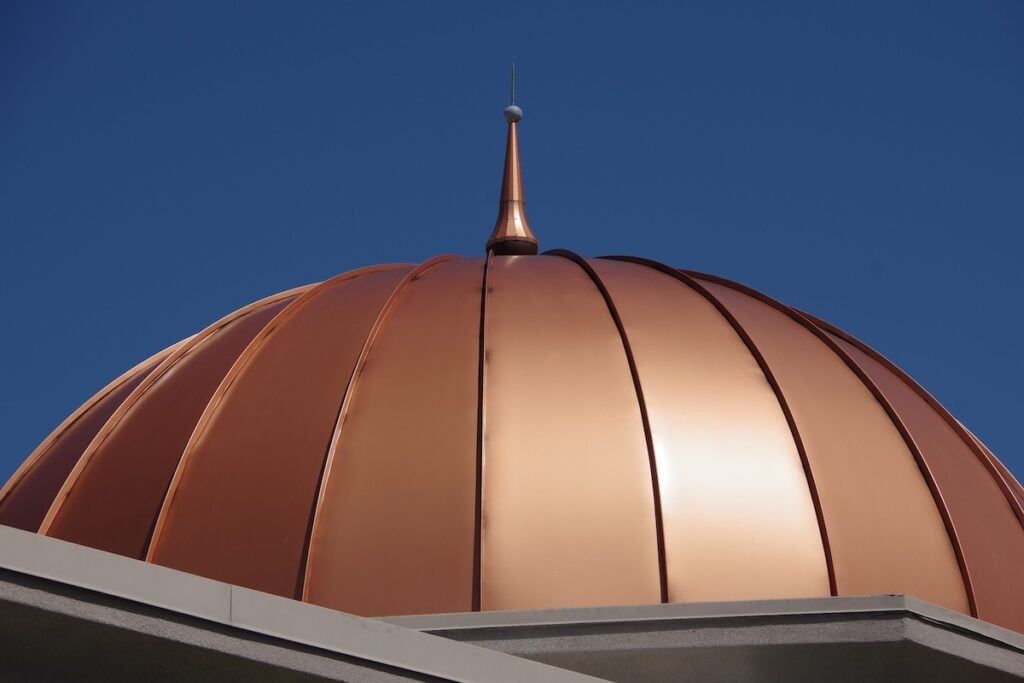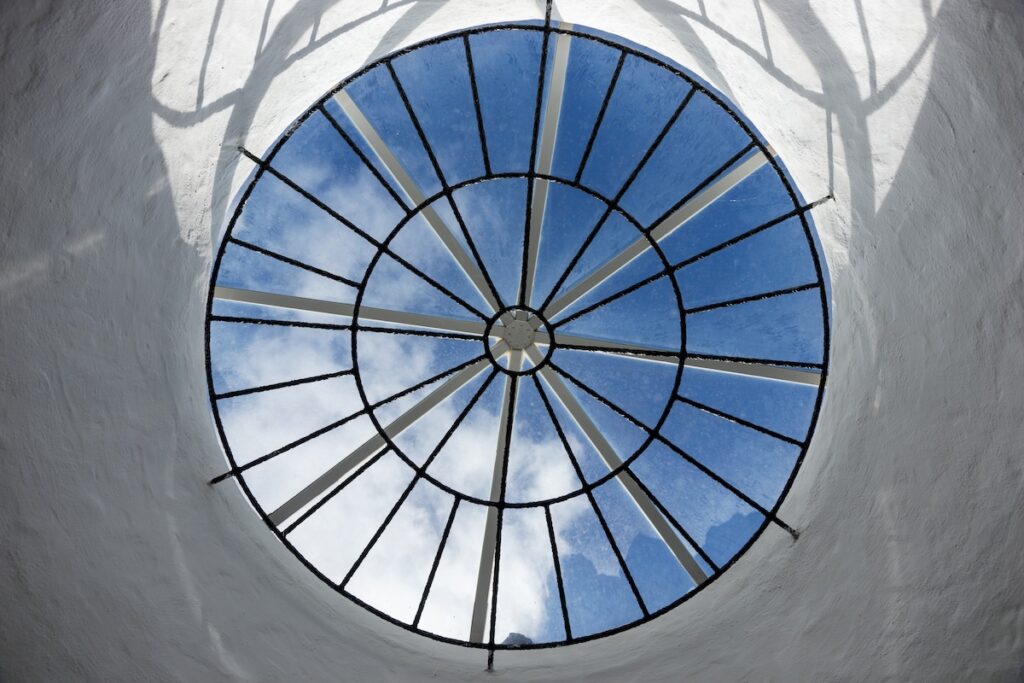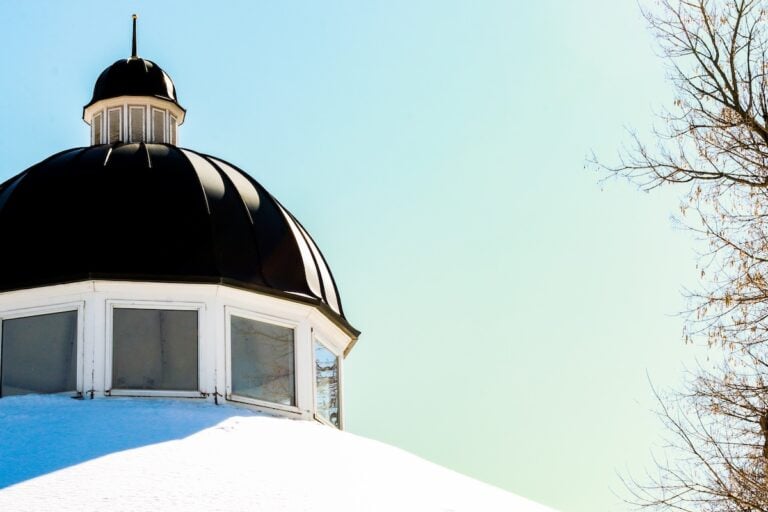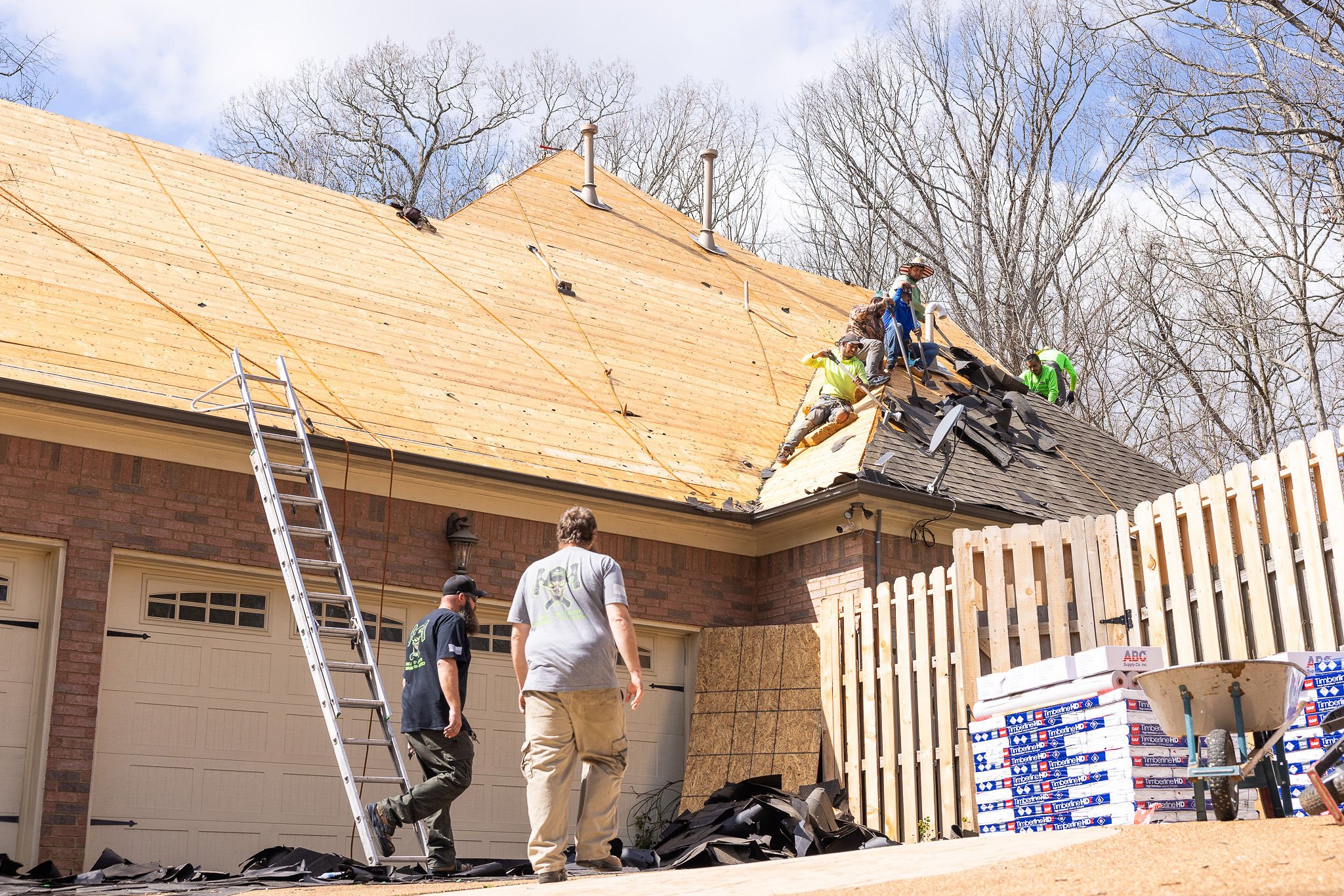Dome roofs represent one of architecture’s most enduring and practical designs, offering unique benefits that set them apart from traditional roofing systems. These curved structures have protected buildings for thousands of years, from ancient Roman temples to modern residential homes. If you’re considering a dome roof for your next construction project, understanding what makes these structures special can help you make an informed decision.
Whether you’re planning a new home or considering roof replacement options, dome roofs offer distinct advantages in durability, energy efficiency, and aesthetic appeal. Our professional roofing services can help you determine if a dome roof is right for your specific needs and local building requirements.
This comprehensive guide will cover:
- The fundamental importance of dome roof design in modern construction
- Five key elements that make dome roofs unique
- Essential considerations for dome roof construction and maintenance
- How dome roofs compare to traditional roofing systems
🏗️ Why Dome Roof Design Is Important

Dome roofs aren’t just architecturally striking—they offer practical advantages that make them increasingly popular in both residential and commercial construction. These curved structures distribute weight evenly, creating incredibly strong and durable buildings that can withstand extreme weather conditions better than many conventional roof designs.
The importance of dome roofs extends beyond their structural benefits:
- Superior weather resistance: The curved shape naturally deflects wind, rain, and snow
- Energy efficiency: Improved air circulation and insulation properties reduce heating and cooling costs
- Longevity: Properly constructed dome roofs can last 50+ years with minimal maintenance
- Space efficiency: The dome shape maximizes interior volume while minimizing exterior surface area
- Earthquake resistance: The curved structure distributes seismic forces more effectively than angular designs
🔍 5 Key Elements That Distinguish Dome Roofs

Understanding the specific characteristics that set dome roofs apart helps explain why they’re becoming more popular in modern construction. Each element contributes to the overall performance and appeal of these unique structures.
1. Structural Geometry and Load Distribution
The dome’s curved geometry creates a self-supporting structure that distributes loads evenly across the entire surface. Unlike traditional peaked roofs that concentrate weight on specific load-bearing walls, dome roofs spread forces uniformly.
- Compression strength: The curved shape puts the entire structure in compression, the strongest structural force
- Minimal support requirements: Internal columns and supports can be eliminated or significantly reduced
2. Advanced Material Construction Methods
Modern dome roofs utilize specialized materials and construction techniques that differ significantly from conventional roofing. These materials must be flexible enough to create smooth curves while maintaining structural integrity.
- Reinforced concrete: Provides strength and durability for permanent dome structures
- Steel framework: Offers flexibility for complex curves and custom architectural designs
3. Unique Insulation and Thermal Properties
The dome shape creates natural thermal advantages that improve energy efficiency. The curved surface promotes better air circulation and allows for innovative insulation strategies.
- Thermal mass benefits: Concrete and masonry dome roofs store and release heat gradually
- Reduced thermal bridging: Continuous curves eliminate many cold spots common in angular construction
4. Specialized Weatherproofing Systems
Dome roofs require different waterproofing approaches compared to traditional flat or pitched roofs. The curved surface presents both challenges and advantages for weather protection.
- Seamless membrane application: Modern synthetic membranes can conform to dome curves without joints
- Natural water shedding: The curved shape naturally directs water away from the structure
5. Distinctive Aesthetic and Design Flexibility
Dome roofs offer unique architectural possibilities that create striking visual statements. They can be incorporated into various architectural styles, from modern minimalist to traditional Mediterranean designs.
- Interior space maximization: Cathedral-like interior spaces with soaring ceilings
- Exterior design versatility: Can complement both contemporary and classical architectural styles
⚙️ Construction Considerations for Geodesic Dome Roofs

Building a dome roof requires specialized knowledge and techniques that differ from traditional roofing construction. Understanding these requirements helps ensure successful project completion and long-term performance.
- Engineering Requirements: Dome roofs need precise structural calculations to ensure proper load distribution and stability. Professional engineering analysis is typically required for building permits and insurance compliance.
- Construction Methodology: Several construction methods exist for dome roofs, including cast-in-place concrete, prefabricated panels, and steel framework systems. Each method has specific advantages depending on project size, budget, and timeline.
- Code Compliance: Building codes may have specific requirements for dome construction that differ from traditional roofing standards. Local authorities should be consulted early in the planning process.
- Contractor Selection: Not all roofing contractors have experience with dome construction. Choosing professionals with specific dome roof expertise ensures proper installation and warranty coverage.
The construction timeline for dome roofs often differs from traditional roofing projects. Weather conditions can significantly impact concrete curing and membrane installation, requiring flexible scheduling and contingency planning.
Quality control becomes especially important with dome construction, as corrections after completion can be difficult and expensive. Regular inspections during construction help identify and address issues before they become major problems.
🎯 Making Your Dome Roof Decision
Dome roofs offer compelling advantages in durability, energy efficiency, and architectural appeal, but they’re not suitable for every project or location. The five distinguishing elements we’ve discussed—structural geometry, advanced materials, thermal properties, weatherproofing systems, and design flexibility—work together to create structures that can outperform traditional roofing in many applications.
Before moving forward with a dome roof project, consider factors like local building codes, contractor availability, and long-term maintenance requirements. The initial investment may be higher than conventional roofing, but the durability and energy savings often provide excellent long-term value.
Ready to explore whether a dome roof is right for your project? Contact our experienced roofing team today for a consultation. We’ll assess your specific needs, local requirements, and budget to help you make the best decision for your building’s future.


